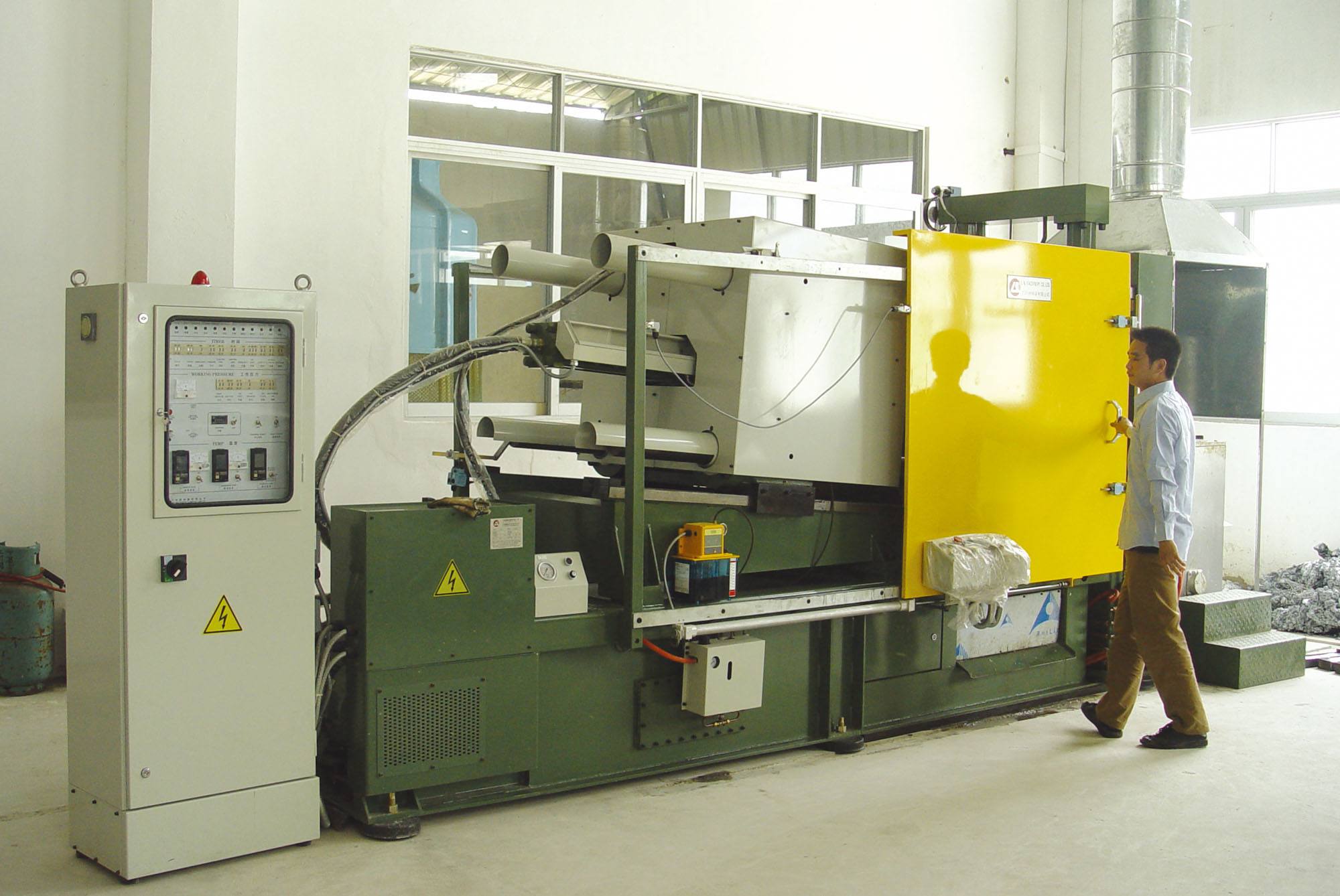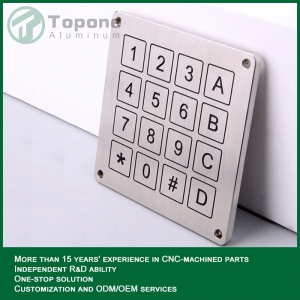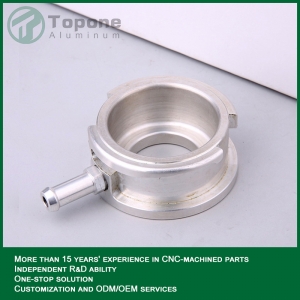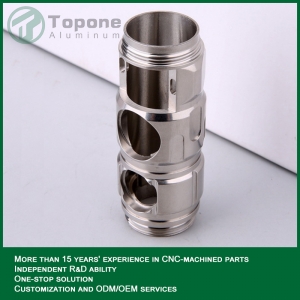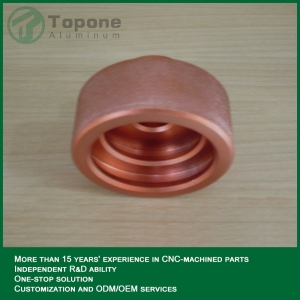TOPONE ALuminum
CNC Miling Machining
CNC (Computer Numerical Controlled) Milling is a means to remove material using high speed, precision machines that use a wide variety of cutting tools to create the final design. Common CNC machines include vertical milling machines, horizontal milling machines, and lathes. Complex cylindrical shapes can be manufactured more cost effectively using a CNC lathe versus a 3 or 5-axis CNC milling machine. With a CNC lathe, the part stock turns while the cutting tools remain stationary. Conversely, on a CNC mill, the cutting tools move while the stock remains fixed. To create the geometry of a part, the CNC computer controls the rotational speed of the stock as well as the movement and feed rates of the stationary tools. If square features are needed on an otherwise round part, the round geometry is first created on the CNC lathe followed by the square features on a CNC mill. To successfully make a part on a CNC Machine, programs instruct the machine how it should move. The programmed instructions given to the CNC machine are encoded using CAM (computer aided manufacturing) software in conjunction with the CAD (computer aided design) model provided by the customer. The CAD model is loaded into the CAM software and tool paths are created based on the required geometry of the manufactured part. Once the tool paths are determined, the CAM software creates machine code that tells the machine how fast to move, how fast to turn the stock and/or tool, and where to move in a 5-axis X, Y, Z, A and B coordinate system.
TPIE-1510
Product name: Aluminum panel Concave words printed
Quote based on drawing or sample
Customized order is welcome
Material: aluminum, copper, brass, stainless steel, steel, iron, alloy
Finishing: polishing, anodize, sanding powder coating, vacuum plating, silver plating
Machinery equipment: CNC milling, turning machine, general milling, turning machine, grinding machine.
Quality control: inspected by ISO9001:2015
Small orders are accepted
Customized logo: accepted
Changing on material, mold, shape: accepted
Develop on artwork and sketch: accepted
Packing: accepted
Sample: accepted
TPIE-1511
Product name: 6061 CNC Precision machined parts
Quote based on drawing or sample
Customized order is welcome
Material: aluminum, copper, brass, stainless steel, steel, iron, alloy
Finishing: polishing, anodize, sanding powder coating, vacuum plating, silver plating
Machinery equipment: CNC milling, turning machine, general milling, turning machine, grinding machine.
Quality control: inspected by ISO9001:2015
Small orders are accepted
Customized logo: accepted
Changing on material, mold, shape: accepted
Develop on artwork and sketch: accepted
Packing: accepted
Sample: accepted
TPIE-1512
Product name: SS304 Precision machined parts
Quote based on drawing or sample
Customized order is welcome
Material: aluminum, copper, brass, stainless steel, steel, iron, alloy
Finishing: polishing, anodize, sanding powder coating, vacuum plating, silver plating
Machinery equipment: CNC milling, turning machine, general milling, turning machine, grinding machine.
Quality control: inspected by ISO9001:2015
Small orders are accepted
Customized logo: accepted
Changing on material, mold, shape: accepted
Develop on artwork and sketch: accepted
Packing: accepted
Sample: accepted
TPIE-1513
Product name: Anodized aluminum parts
Quote based on drawing or sample
Customized order is welcome
Material: aluminum, copper, brass, stainless steel, steel, iron, alloy
Finishing: polishing, anodize, sanding powder coating, vacuum plating, silver plating
Machinery equipment: CNC milling, turning machine, general milling, turning machine, grinding machine.
Quality control: inspected by ISO9001:2015
Small orders are accepted
Customized logo: accepted
Changing on material, mold, shape: accepted
Develop on artwork and sketch: accepted
Packing: accepted
Sample: accepted
Finishes
The surface treatment of aluminum materials is as follows:
1. Sandblasting is mainly used for surface cleaning. Sandblasting can increase the surface roughness before painting (spraying or plastic spraying), which has a certain contribution to the improvement of adhesion, but its contribution is limited. It is inferior to chemical coating pretreatment.
2. Passivation is a method to change metal surface into a state that is not easy to be oxidized and to slow down the corrosion rate of metal.
3. Coloring: There are two main coloring processes for aluminum: one is aluminum oxidation coloring process, the other is aluminum electrophoresis coloring process. Various colors are formed on the oxide film to meet certain requirements, such as black used in optical instrument parts, golden yellow on commemorative stamps, etc.
Conductive oxidation (chromate conversion coating) - used for both protective and conductive occasions.
4. Chemical polishing is a kind of chemical polishing method, which uses aluminum and aluminum alloy as selective self-dissolving agent in acidic or alkaline electrolyte solution to leveling and polishing the annealing surface in order to reduce its surface roughness and PH.
This polishing method has the advantages of simple equipment, no power supply, no restriction on the size of the parts, high casting speed and low processing cost. The purity of aluminum and aluminum alloy has a great influence on the quality of chemical polishing. The higher the purity, the better the polishing quality, and vice versa.
5. Chemical oxidation: the oxide film is thin, thickness is about 0.5-4 micron, and porous, soft, with good adsorption, can be used as the bottom layer of organic coatings, but its wear resistance and corrosion resistance are not as good as anodic oxidation film;
Chemical oxidation processes of aluminum and aluminum alloys can be divided into alkaline oxidation and acid oxidation according to their solution properties.
According to the nature of film, it can be divided into oxide film, phosphate film, chromate film, chromate phosphate membrane.
6. Spray: used for external protection and decoration of equipment, usually on the basis of oxidation. Aluminum parts should be pre-treated before painting to make the coating and the workpiece bond firmly, there are three general methods: phosphating (phosphate method), chromizing (chromium-free), chemical oxidation.
7. Electrochemical oxidation, aluminum and aluminum alloy chemical oxidation treatment equipment is simple, easy to operate, high production efficiency, does not consume electrical energy, a wide range of applications, not limited by the size and shape of parts. The thickness of the oxide film is about 5-20 microns (the thickness of hard anodic oxide film can reach 60-200 microns). It has higher hardness, good heat resistance and insulation, higher corrosion resistance than chemical oxidation film, porous, and good adsorption capacity.
Stamping
Stamping is a kind of production technology that can make the sheet metal be directly deformed and deformed in the die by the power of conventional or special stamping equipment, so as to obtain a certain shape, size and performance of product parts. Sheet metal, mold and equipment are the three elements of stamping process. According to the stamping temperature, it can be divided into hot stamping and cold stamping. The former is suitable for sheet metal processing with high deformation resistance and poor plasticity, while the latter is carried out at room temperature, which is a common stamping method for sheet metal. It is one of the main methods of metal plastic processing (or pressure processing), also belongs to the material forming engineering technology.

Die Casting
Die casting is a kind of metal casting technology, which is characterized by high pressure applied to molten metal by mold cavity. Molds are usually made of alloy with higher strength, which is similar to injection molding. Most die castings are iron-free, such as zinc, copper, aluminum, magnesium, lead, tin and Lead-Tin Alloys and their alloys. According to different die casting types, cold chamber die casting machine or hot chamber die casting machine is needed.
